Spice Safari: Exploring the Wild Flavors of West African Cuisine
Welcome, spice hunters and culinary explorers! Today we’re diving headfirst into the vibrant, bold, and sometimes downright sassy world of West African cuisine. From fiery pepper sauces to earthy root spices that have seasoned meals for centuries, this journey is packed with flavor bombs, cooking hacks, and a few surprising twists.
Whether you're a seasoned pro in the kitchen or just starting your spice adventure, grab your apron and let’s go on a flavor-packed safari!
🌿 The Spice Lineup: Stars of West African Flavor
Before we jump into recipes and techniques, let’s get to know the real MVPs — the spices and seasonings that make West African food sing. These ingredients aren’t just about heat; they bring depth, aroma, and tradition to every dish.
- Scotch Bonnet Peppers – The fiery face of West African heat
- Crayfish (Dawadawa) – Funky umami bomb from fermented crustaceans
- Efuru (African Pepper Tree Seed) – Earthy and citrusy, it's like black pepper’s wild cousin
- Ginger Root – Sweet heat used in drinks and stews alike
- Alligator Pepper Seeds – Aromatic seeds often used whole or ground
- Cameroon Pepper (Calabash Nutmeg) – Smoky and complex, great for soups
- Dried Shrimp & Fish – Salty, fishy funkiness that boosts broths
- Ngiri (Grain of Paradise) – A peppery spice with hints of ginger and citrus
| Spice | Flavor Profile | Common Use | Heat Level (SHU) |
|---|---|---|---|
| Scotch Bonnet | Fruity, smoky, intensely hot | Pepper sauces, soups, marinades | 100,000–350,000 |
| Alligator Pepper | Pungent, floral, nutmeg-like | Stews, beverages, ceremonial dishes | Low |
| Cameroon Pepper | Smoky, woody, mildly spicy | Okro soup, palm nut stew | Medium |
| Ngiri | Earthy, peppery, citrusy | Rub for grilled meats, soups | Medium |
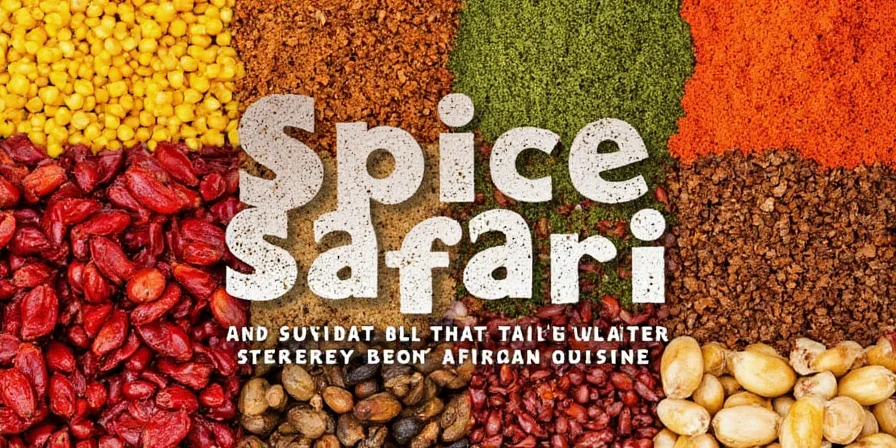
🔥 Top 7 Spicy Secrets from West African Kitchens
- The Power of Paste: Blend fresh peppers, onions, garlic, and spices into a paste before cooking. This “pepper base” forms the soul of many stews and sauces. Try blending Scotch Bonnet, bell peppers, and crayfish for a punchy start.
- Toast Your Spices: Lightly toast Cameroon pepper or alligator pepper seeds in a dry pan before grinding. It unlocks deeper, smokier notes — trust us, your nose will thank you.
- Layer Like a Pro: Start with aromatics (onion, garlic), add your spice blend, then proteins and liquids. Each layer builds complexity — especially in slow-cooked dishes like groundnut stew or light soup.
- Use Dried Seafood for Umami: Crumbled dried shrimp or stockfish can replace bouillon cubes in a pinch. They infuse dishes with rich seafood flavor — especially potent in egusi or okra soups.
- Balance with Sweetness: Don’t be afraid to add a touch of sugar, tamarind, or even fruit like mango to balance out intense heat. It’s a classic trick in Ghanaian shito sauce.
- Chill Before Serving: Some spice blends — especially those with crayfish or fermented condiments — taste better after resting overnight. Letting them mellow helps flavors marry beautifully.
- Make Ahead & Freeze: Many West African spice pastes and bases freeze well. Whip up a batch of pepper sauce or suya seasoning and store in ice cube trays for easy future use.
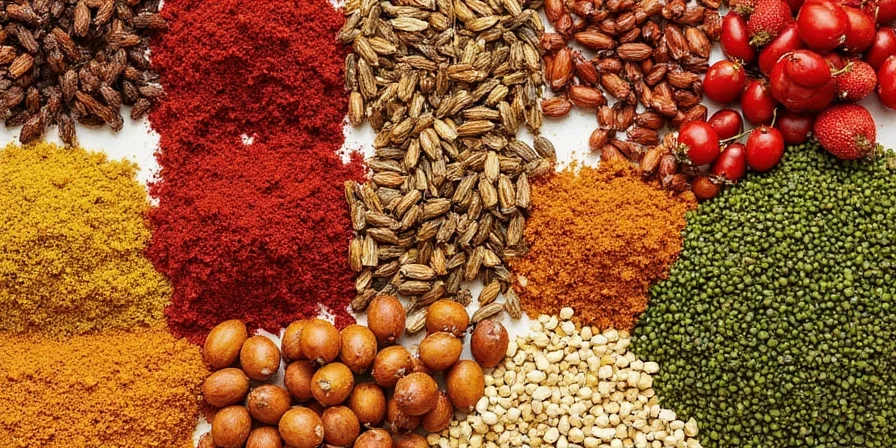
🍲 Must-Try West African Dishes & Their Spice Profiles
Now that we’ve got our spice toolbox ready, let’s explore some iconic West African dishes that really show off these flavors.
1. Jollof Rice (Nigeria/Ghana/Sierra Leone)
Spice Spotlight: Bell peppers, scotch bonnet, thyme, curry powder
This one-pot wonder gets its fire from blended pepper sauce and deep color from tomato paste. Each country has its own version — Nigerian jollof is smoky and spicy, while Ghanaian leans sweeter.
2. Egusi Soup (Nigeria)
Spice Spotlight: Ground melon seeds, scotch bonnet, dried fish, crayfish
A thick, nutty soup made with ground melon seeds and leafy greens. The secret? Toasted melon seeds release oils that create that signature richness.
3. Light Soup (Ghana)
Spice Spotlight: Scotch bonnet, ginger, cloves, alligator pepper
Served with fufu or banku, this is a party favorite. Light doesn’t mean mild — it means it’s not tomato-based. Packed with bold spices and protein-rich fish or meat.
4. Maafe / Groundnut Stew (Senegal/Mali)
Spice Spotlight: Ginger, cinnamon, cayenne, peanut butter
A peanut lover’s dream, this sweet-and-spicy stew balances warmth from cinnamon and ginger with the kick of red pepper flakes.
5. Suya (Nigeria)
Spice Spotlight: Yaji (su ya spice mix), chili, ginger, garlic
This grilled meat skewer is coated in a magical blend called yaji — a mix of ground peanuts, paprika, salt, and chili. It’s smoky, spicy, and dangerously addictive.
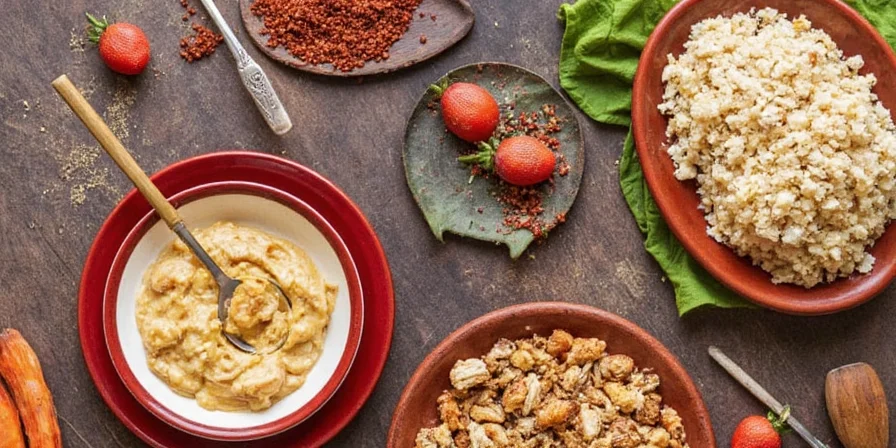
🌍 Cultural Tidbits: More Than Just Spice
Spices in West African culture are more than flavor boosters — they’re cultural symbols, trade treasures, and storytelling tools passed down through generations.
- In Ghana, families often guard their own unique blend of shito sauce like a family heirloom — each version tells a story of heritage and home.
- During festivals and weddings, extra-hot pepper sauce competitions are common. Winning isn’t just about spice tolerance — it’s a badge of honor!
- In Nigeria, yaji for suya was once made with crushed snail shells for texture before modern grinders became popular.
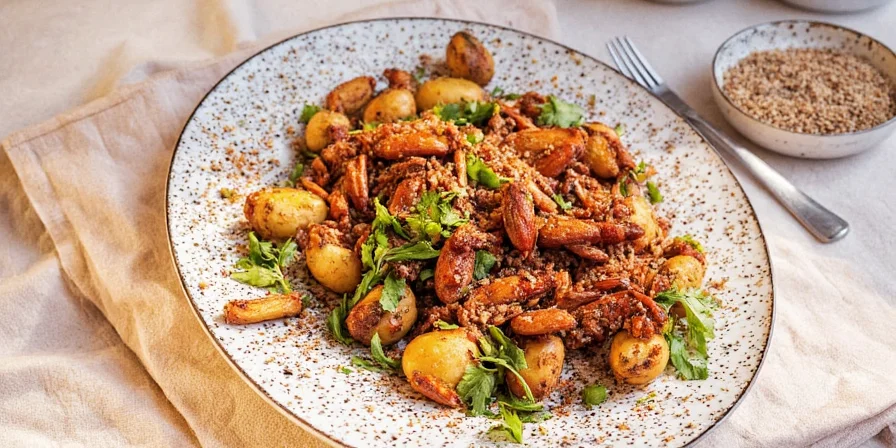
💡 Quick Spice Tips & Tricks for Home Chefs
Want to bring authentic West African flair to your cooking without booking a flight? Here are five fast, foolproof tips:
- Make a homemade suya spice blend: Mix smoked paprika, garlic powder, ginger, chili flakes, salt, and ground peanuts. Brush onto skewered beef or veggies before grilling.
- Upgrade your rice game: Add a dash of thyme and ground alligator pepper to your rice water for an aromatic twist.
- Try spice freezing: Blend peppers, onions, and spices, then freeze in portions. No need to thaw — just drop a cube into your pot!
- Toast & grind your own: Buy whole Cameroon pepper or crayfish and grind them at home. The flavor boost is unreal compared to pre-ground versions.
- Pair with cool sides: Balance heat with coconut rice, fried plantains, or avocado slices. Cooling contrast = happy taste buds.
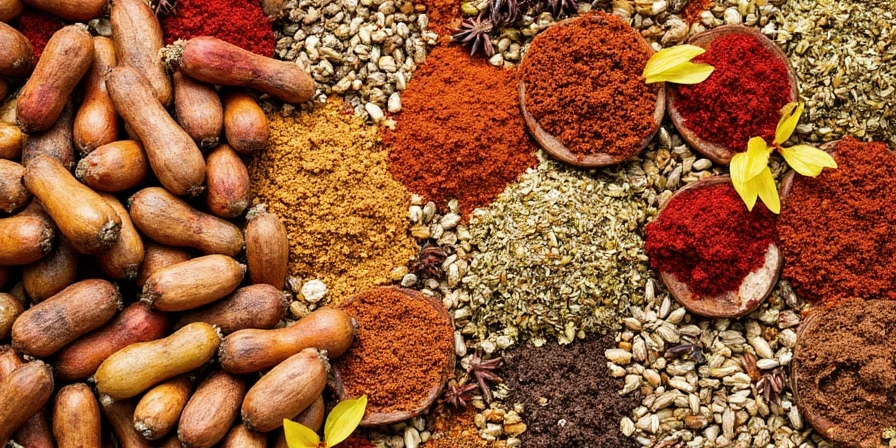
🔚 Final Thoughts: Keep It Spicy, Keep It Real
West African cuisine isn’t just about big flavors — it’s a celebration of culture, history, and heart. Whether you're stirring a bubbling pot of jollof rice or dipping your first bite of fufu into fiery pepper soup, you're tasting centuries of tradition and passion.
So go ahead — experiment, play with ratios, and most importantly, don’t be afraid of the heat. Your next favorite dish might just come from a spice you’ve never heard of. And remember: when in doubt, add more ginger… or maybe just a splash more shito.
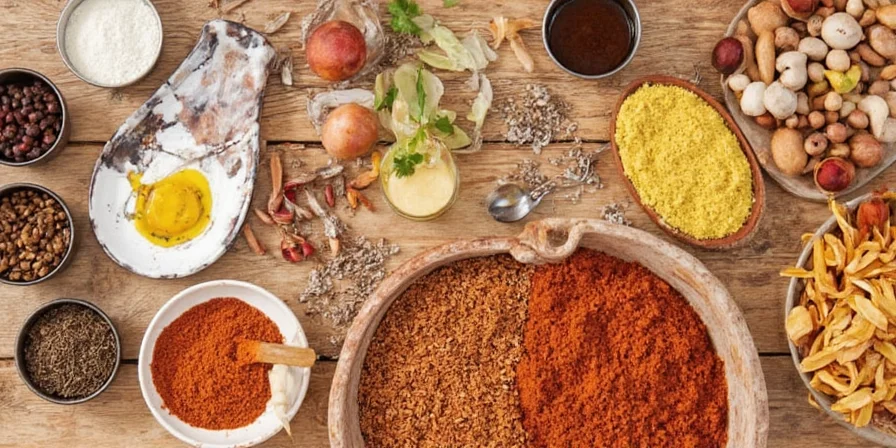
📌 Frequently Asked Questions (FAQ)
What is the difference between suya and peri-peri?
Suya uses a dry rub with peanut dust, ginger, and paprika, giving it a smoky-sweet flavor. Peri-peri is usually a wet marinade with lemon, garlic, and chili, commonly used in Southern Africa.
Can I substitute Scotch Bonnet peppers?
Habanero is your best bet — same fruity heat profile. For less heat, try yellow bell peppers mixed with a bit of chili powder.
Where can I find crayfish or alligator pepper?
Look in African or Caribbean markets, or order online. Many specialty spice shops now carry ethically sourced versions.
Is West African food always spicy?
Not necessarily! Heat levels vary by region and recipe. Many dishes focus on savory depth, sourness, or sweetness as much as spice.
How do I handle super-hot peppers safely?
Wear gloves when chopping, avoid touching eyes, and wash hands thoroughly. You can also remove seeds for a milder kick.
📚 Conclusion: Your Spice Journey Has Just Begun
From the bustling markets of Lagos to the street corners of Accra, West African spices tell stories of trade routes, community, and bold creativity. They’re not just seasonings — they’re invitations to experience a cuisine full of soul, spice, and swagger.
So whether you're spicing up weeknight dinners or impressing friends at your next cookout, remember: the magic lies in the blend, the technique, and the joy of sharing something delicious.
Stay spicy, stay curious, and keep exploring the global spice map — one bite at a time!

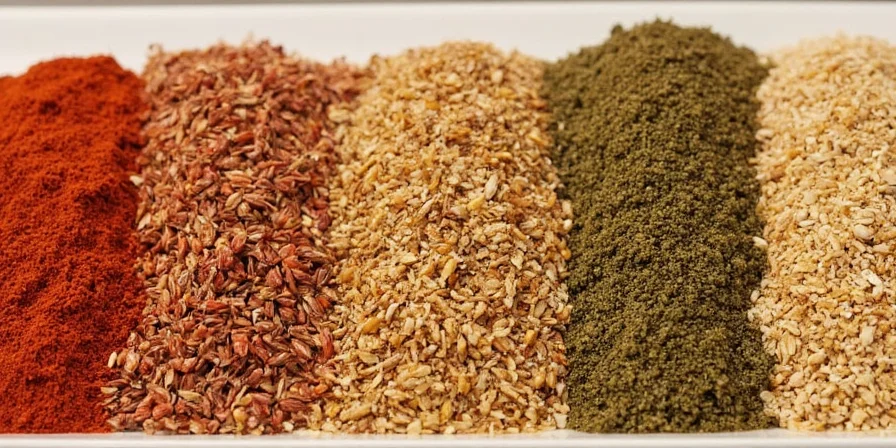









 浙公网安备
33010002000092号
浙公网安备
33010002000092号 浙B2-20120091-4
浙B2-20120091-4